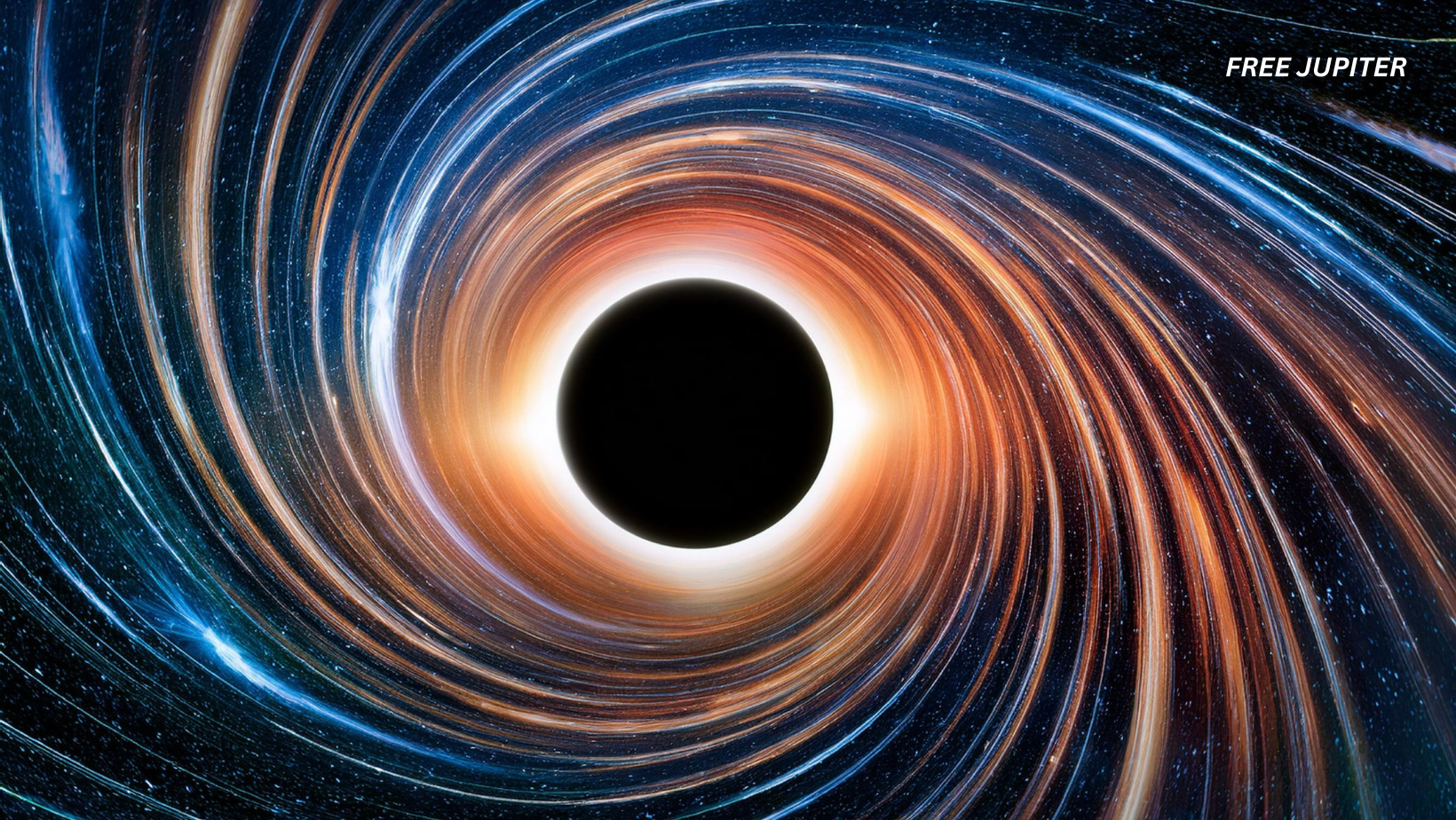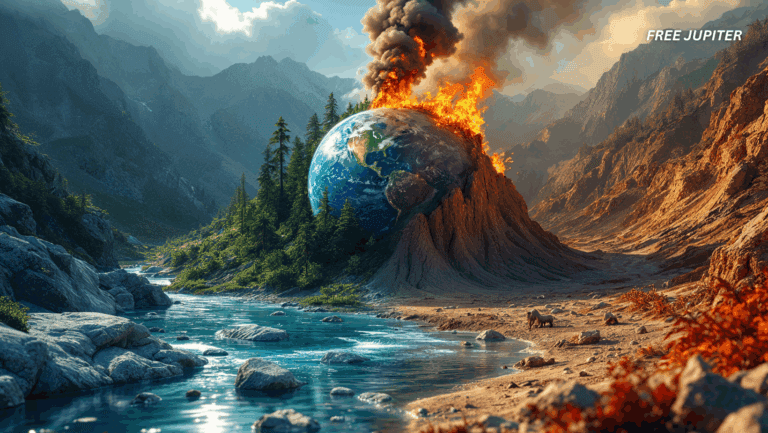Astronomers may have stumbled upon something extraordinary: the very first direct evidence of a primordial black hole—a cosmic giant that may have formed just moments after the Big Bang.
This potential breakthrough comes from NASA’s James Webb Space Telescope (JWST), which detected a tiny red speck of light dating back nearly 13 billion years. That speck, called QSO1, appears to be hiding a black hole as massive as 50 million Suns. If true, this discovery could completely change how we understand the birth of black holes, galaxies, and maybe even the structure of the universe itself.
The Mysterious “Little Red Dots”
To appreciate why this is such a big deal, let’s step back. The early universe—less than a billion years after the Big Bang—was wrapped in what scientists call a cosmic fog. During this time, known as the Epoch of Reionization, light from the first stars and galaxies slowly began clearing this haze, allowing the universe to become transparent.
When JWST peers into this era, it doesn’t see neat galaxies or bright star clusters. Instead, it keeps spotting “Little Red Dots” (LRDs)—tiny blobs of stretched, reddish light. Because the universe has been expanding for 13.8 billion years, light from ancient objects has literally been stretched, or redshifted, into infrared wavelengths. JWST, which is designed to see in the infrared, is perfect for detecting them.
But here’s the catch: nobody’s entirely sure what these dots are. Some astronomers think they’re the faint beginnings of black holes. Others believe they might just be star clusters. The trouble is, black holes usually glow with X-rays, and these mysterious dots don’t seem to.
That’s why QSO1 has drawn so much attention.
Read more: Black Holes That Turn Matter Into Dark Energy May Solve ‘Cosmic Hiccups’ Mystery
A Cosmic Magnifying Glass
One reason scientists can study QSO1 in such detail is thanks to an incredible natural trick called gravitational lensing.
Imagine you’re looking at a streetlight through the bottom of a wine glass. The glass bends and magnifies the light, making it look brighter or distorted. Space does the same thing. When a huge object like a galaxy cluster sits between us and something far away, its gravity bends the light, acting like a cosmic magnifying glass.
QSO1 happens to sit behind such a lens, which allows astronomers to see it far more clearly than they normally could. By analyzing the way its light bends and stretches, the research team was able to measure how fast material is moving around it—essentially building a rotation curve that tells them how much mass is hiding there.
And the results? Too massive to be just a star cluster.
A Monster Black Hole in a Tiny Galaxy
According to the data, QSO1 holds a black hole weighing about 50 million solar masses. To put that into perspective, the black hole at the center of our own Milky Way galaxy is around 4 million solar masses—and it had over 13 billion years to grow.
What makes QSO1 stranger is that the black hole seems to be sitting inside a galaxy much smaller than expected. Normally, galaxies and black holes grow together, with the galaxy feeding gas and stars into the black hole, while the black hole influences how stars form. Here, though, the galaxy looks puny compared to its oversized central black hole.
It’s like finding a watermelon inside a walnut shell.
This mismatch suggests something unusual: maybe the black holes came first, and galaxies assembled around them later.
Seeds of Darkness: Two Theories
If QSO1 really is what it seems, there are two main ways it could have formed.
- Direct Collapse Black Holes (DCBHs):
These would have formed when massive, pristine clouds of hydrogen gas in the early universe collapsed directly under their own gravity. No stars needed—just a giant cloud collapsing into a huge black hole seed. - Primordial Black Holes (PBHs):
These are even more exotic. PBHs are thought to have formed in the first fractions of a second after the Big Bang, squeezed into existence by intense fluctuations in the density of space itself. They could be as small as atoms or as massive as stars, and they remain one of the most fascinating but unproven ideas in cosmology.
The problem is, QSO1 doesn’t neatly fit either category. DCBHs should glow with ultraviolet light, which isn’t seen here. PBHs, on the other hand, are usually expected to be much smaller than 50 million Suns. So how do we explain QSO1?
One possibility is rapid growth. A smaller PBH could have ballooned into a giant through constant feeding—swallowing gas, dust, and maybe even stars—at a much faster rate than we usually expect.
Read more: Astrophysicist Suggests Sending a Spacecraft to Visit a Black Hole
Why This Matters
If QSO1 turns out to be a primordial black hole, it would be the first direct evidence that these mysterious objects really exist. That would mean black holes didn’t just form later from collapsed stars but may have been born at the dawn of time itself.
This would solve a nagging puzzle in astronomy: how did black holes in the early universe get so big, so fast? We already know that some ancient quasars—bright galaxies powered by gigantic black holes—existed when the universe was less than a billion years old. But we’ve never been able to fully explain how they bulked up so quickly. Primordial black holes could be the missing link.
A Note of Caution
As thrilling as this sounds, the discovery isn’t set in stone just yet. The study is still a preprint, which means it hasn’t been peer-reviewed. Extraordinary claims require extraordinary evidence, and astronomers will need more observations before rewriting cosmic history.
Still, JWST was built precisely for this kind of work: to peer into the first billion years after the Big Bang and reveal secrets we couldn’t see before. Even if QSO1 doesn’t turn out to be a primordial black hole, it’s already telling us something new about the strange, messy beginnings of the cosmos.
Related Cosmic Mysteries
This isn’t the first time astronomers have puzzled over black holes in the early universe. A few related discoveries help put QSO1 into context:
- The Monster Quasars: In 2021, astronomers found a quasar powered by a black hole 1.6 billion solar masses large—when the universe was just 670 million years old. Explaining its growth has been a major headache.
- LIGO and Primordial Black Holes: Some scientists speculate that the gravitational waves detected by LIGO (ripples in spacetime from colliding black holes) might actually come from primordial black holes merging.
- Dark Matter Connection: There’s even a fringe idea that primordial black holes could make up part of the mysterious dark matter that holds galaxies together.
Each of these mysteries points to the same conclusion: black holes may not just be the leftovers of dead stars, but fundamental building blocks of the cosmos.
Read more: Dark Matter Could Spawn Black Holes That Consume Planets From the Inside
Looking Ahead
For now, astronomers will be keeping a close eye on QSO1 and its fellow Little Red Dots. With more data, they’ll be able to test whether these blobs really are the long-sought “black hole seeds” that grew into the giants we see today.
No matter the outcome, the discovery highlights one of the best things about science: sometimes the universe hands us questions we never even thought to ask. And sometimes, those questions come in the form of a tiny, glowing red dot, billions of light-years away.
Featured image: Freepik.
Friendly Note: FreeJupiter.com shares general information for curious minds. Please fact-check all claims and double-check health info with a qualified professional. 🌱










